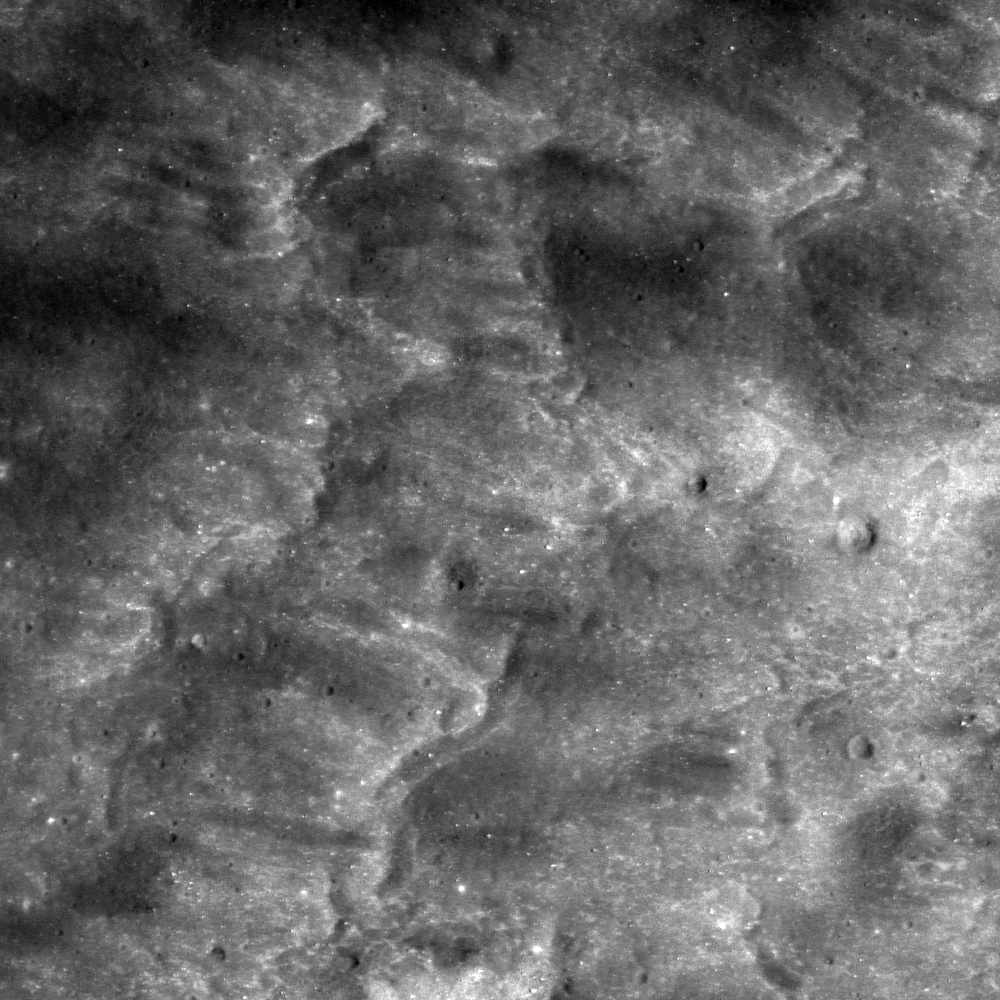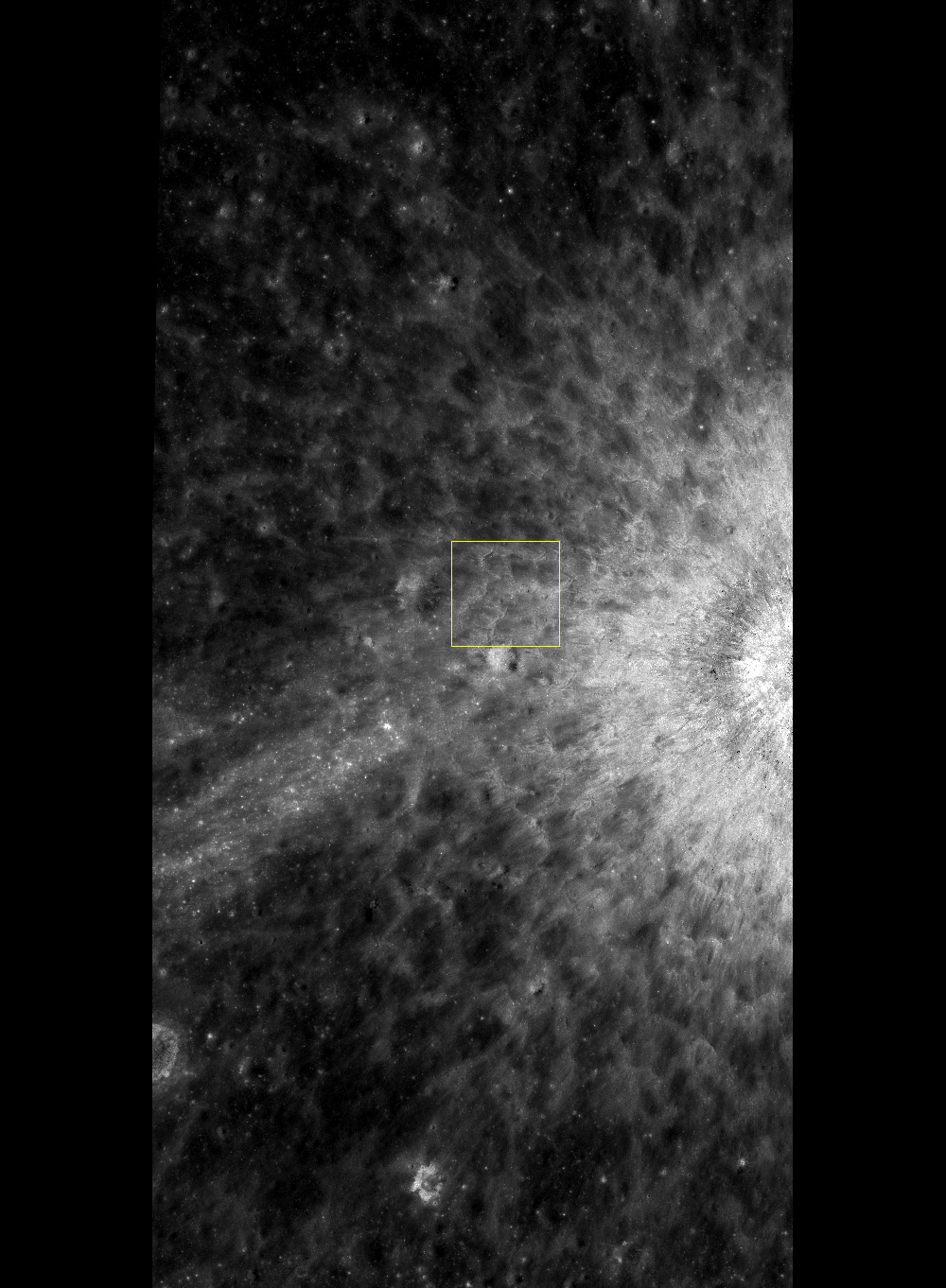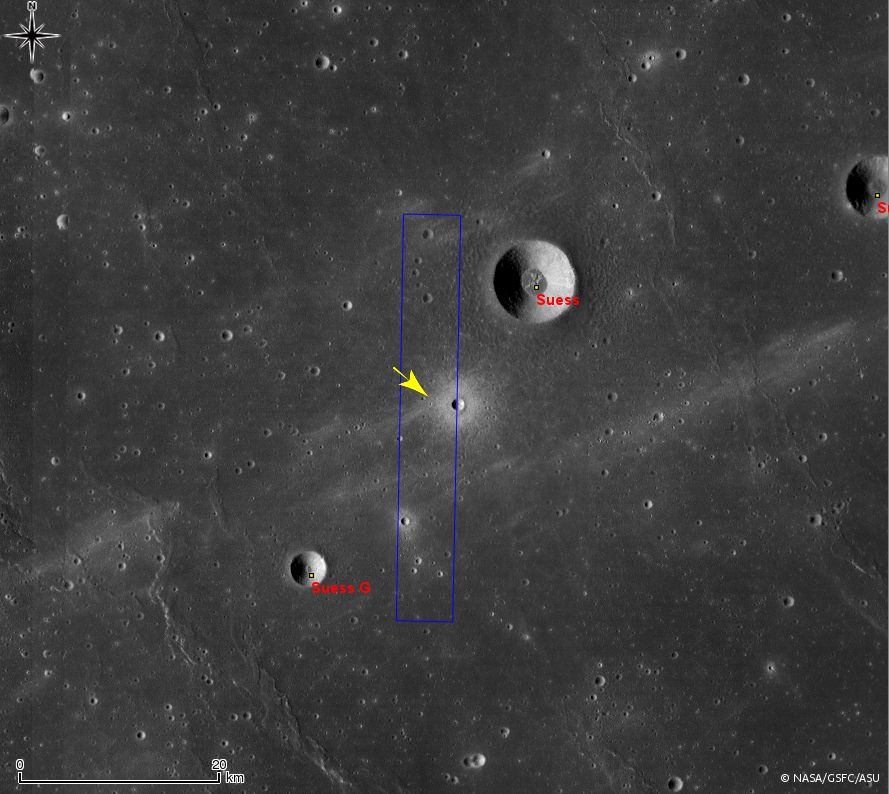
Today's Featured Image highlights a portion of a very fresh ejecta deposit. The source crater is an unnamed crater about 1.2 km in diameter, located within Oceanus Procellarum. As seen in the NAC context view below, the higher reflectance ejecta spreads radially from the crater, and in some regions may have formed interference patterns that look a bit like fish scales. The opening image focuses on a typical portion showing this geometric pattern.
In the vacuum of space, the ejected materials experience no atmospheric drag, and thus no fluid dynamic instabilities driven by such an interaction occur. How then was this sparse/dense ejecta pattern formed? The advancing ejecta curtain probably already had internal density contrasts that produced greater or lesser collision frequencies among the admixed rock fragments. Portions having regular density at intervals with portions have irregular density might have formed this odd, scaly pattern.
Explore the exotic patterns of this young crater ejecta in full NAC frame yourself!
Related posts:
Lassell D Ejecta, In the Wake of Giordano Bruno, Smooth Ejecta, Polka-dot Ejecta, Brush Strokes of Ejecta, Action Shot, Delicate patterns in Giordano Bruno ejecta, Ejecta sweeps the surface
Published by Hiroyuki Sato on 21 February 2013

